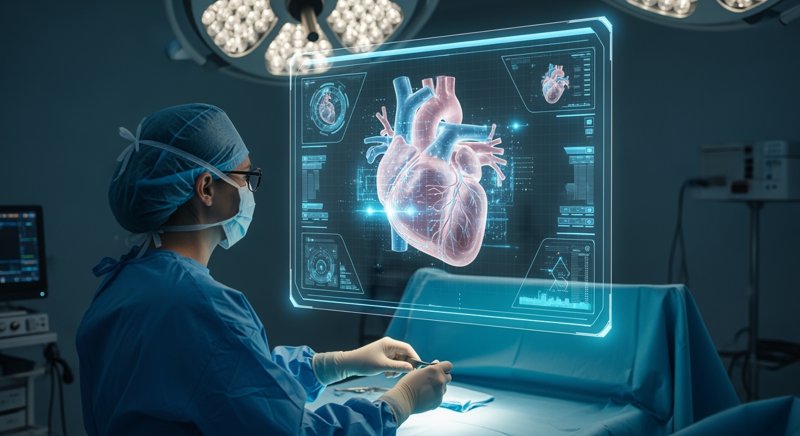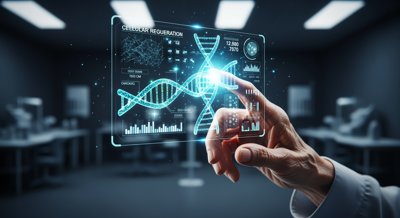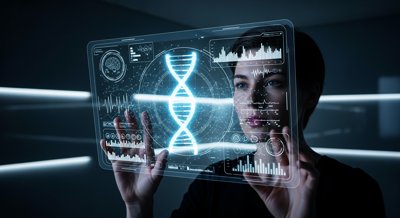🧐 Fact vs. Fiction: Debunking 5 Common Myths About AI in Medicine

Artificial intelligence is rapidly moving from the realm of science fiction into the daily practice of medicine, sparking both incredible optimism and profound anxiety. The headlines are filled with stories of “doctor-beating” algorithms and futuristic diagnostic tools. But with this wave of innovation comes a tide of misinformation. Will a robot replace your family doctor? Is AI an infallible oracle or a biased black box?
It’s time to separate fact from fiction. As we build the future of healthcare, it’s crucial to have a clear-eyed view of what AI is, what it isn’t, and how it can best serve humanity. Let’s dissect five of the most persistent myths about AI in medicine.
Myth #1: AI Will Replace Doctors
This is the headline-grabbing fear: a future where human clinicians are obsolete, replaced by cold, calculating machines. It’s a powerful image, but it fundamentally misunderstands the nature of both medicine and artificial intelligence.
The Reality: AI is an Augmentation Tool, Not a Replacement
In medicine, AI is not an autonomous entity; it’s a sophisticated co-pilot. Its greatest strength lies in performing tasks that are challenging for humans: analyzing massive datasets, identifying subtle patterns in images, and automating repetitive administrative work.
Think of it this way: AI can screen thousands of mammograms and flag suspicious areas with superhuman accuracy, but it cannot replace the radiologist who interprets those findings in the context of a patient’s history. It cannot replace the oncologist who has an empathetic conversation with that patient about their diagnosis and treatment options. As we’ve explored in our article on how AI is translating the language of medicine, its role is to enhance, not erase, the human element. Medicine is a deeply human practice, requiring empathy, intuition, and a holistic understanding that currently lies far beyond the reach of any algorithm.
Myth #2: AI is a “Black Box” That Makes Unexplained Decisions
This myth suggests that AI is an opaque, unknowable system. It gives a recommendation, but the reasoning behind it is a mystery, making it impossible to trust.
The Reality: The Push for “Explainable AI” (XAI) is a Core Principle
While early neural networks did have a “black box” problem, the field has evolved significantly. Today, explainability is a central focus in the development of medical AI. A modern, trustworthy AI doesn’t just provide an answer; it shows its work.
For example, a diagnostic AI might conclude: “There is an 85% probability of pneumonia.” A well-designed system will then justify this by highlighting the specific areas of the chest X-ray that show consolidation and referencing the patient’s reported symptoms (fever, cough) that align with this diagnosis. This transparency allows a clinician to critically evaluate the AI’s logic, agree or disagree, and maintain full control over the final diagnostic decision.
Myth #3: AI Will Inherit and Amplify Human Biases
This is a legitimate and critical concern. If an AI is trained on biased data, won’t it produce biased results, perpetuating existing health disparities?
The Reality: AI Offers a Unique Opportunity to Identify and Correct Bias
It is absolutely true that AI can reflect the biases present in its training data. However, unlike the often unconscious biases of humans, algorithmic bias can be systematically identified, measured, and mitigated.
Researchers and developers are actively creating techniques to audit datasets for demographic imbalances and test algorithms for fairness across different population groups. By making bias visible and quantifiable, AI provides a powerful tool to make healthcare more equitable. The goal is not to create a flawless, bias-free system overnight, but to enter a continuous cycle of improvement, using AI to shine a light on and actively correct the systemic biases that have long plagued medicine.
Myth #4: AI is Infallible and Will Eliminate All Diagnostic Errors
On the flip side of the “black box” fear is the myth of the infallible oracle—the belief that AI will achieve 100% accuracy and put an end to medical mistakes.
The Reality: AI is a Powerful Tool for Error Reduction, Not Elimination
AI can significantly reduce the rate of diagnostic errors by providing a consistent, data-driven second opinion. It doesn’t get tired or distracted. However, it is not perfect. An AI’s performance is entirely dependent on the quality and breadth of the data it was trained on. It can be “fooled” by unusual or out-of-distribution cases that it has never seen before.
The safest and most effective model is one of human-machine collaboration. The clinician brings contextual understanding and real-world experience, while the AI brings tireless data analysis. Together, they can achieve a level of accuracy that neither could reach alone.
Myth #5: AI is Only for Complex, Niche Diseases
There’s a perception that AI is a high-tech tool reserved for academic medical centers to solve rare genetic disorders or complex cancers.
The Reality: AI’s Biggest Impact May Be in Everyday, Routine Care
While AI is crucial for advancing research in complex diseases, its most immediate and widespread impact will be felt in the daily practice of medicine. AI is perfectly suited to:
- Streamline Administrative Tasks: Automating documentation and paperwork to combat physician burnout.
- Triage Patients: Helping to determine the urgency of a medical issue.
- Analyze Routine Tests: Screening thousands of blood tests or EKGs to flag subtle abnormalities for human review.
- Promote Preventive Health: Powering personalized medicine by providing lifestyle recommendations based on an individual’s unique risk factors.
By absorbing these routine tasks, AI frees up our most valuable healthcare resource: the time and cognitive energy of human clinicians, allowing them to focus on you, the patient.
The Dawn of a Collaborative Era
The future of medicine is not a battle of human vs. machine. It is a story of collaboration. AI is a powerful new instrument in the medical orchestra, but it requires a human conductor to bring its potential to life. By embracing a realistic, evidence-based understanding of this technology, we can move beyond the myths and begin to compose a future of healthcare that is more accurate, accessible, and profoundly human.





